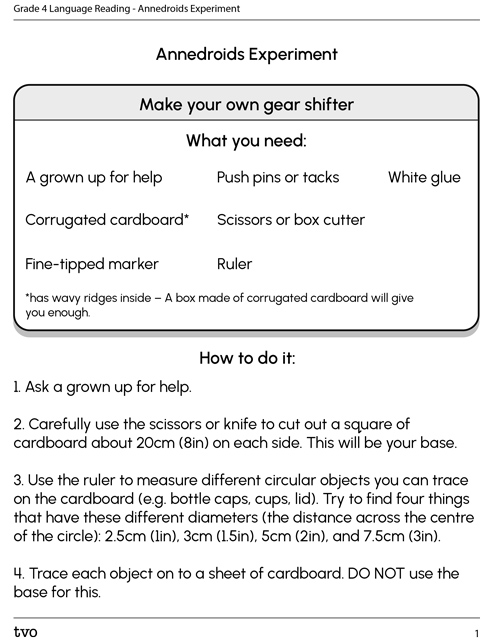Minds On
Brainstorm similarities and differences
Brainstorm
Share your thoughts
Examine the cover pages and/or excerpts from the following six texts. Then, select four to compare and contrast.
Copy Compare and Contrast into your notebook or using the following fillable and printable document. You can also record your ideas using another method of your choice.
Press the following titles to access each text.
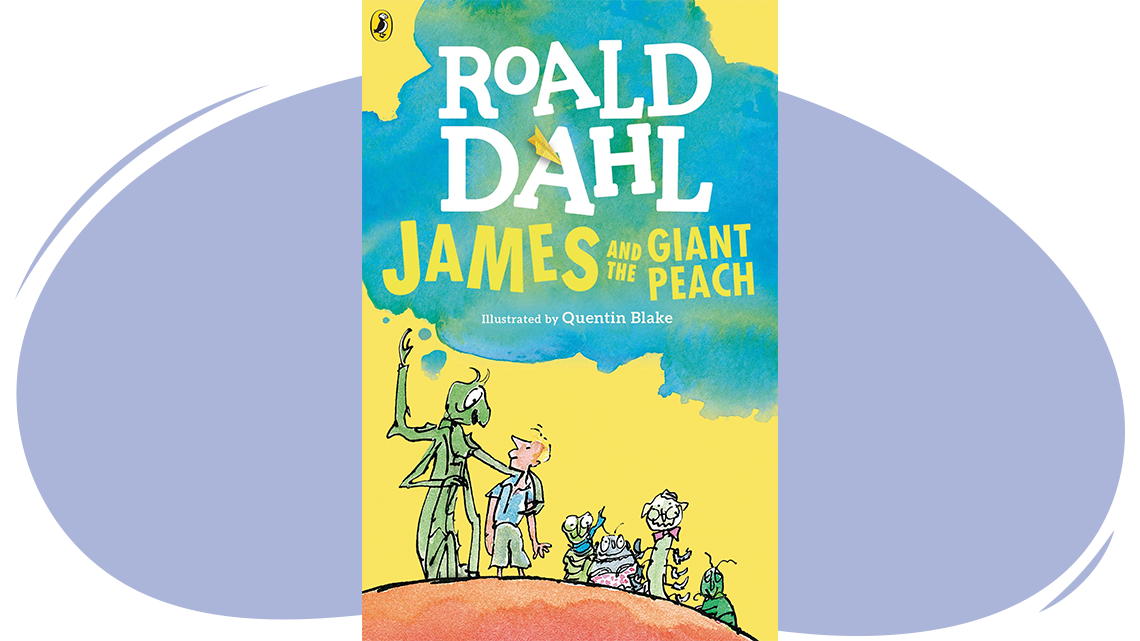
Source: James and the Giant Peach - Kindle edition by Dahl, Roald, Blake, Quentin. Children Kindle eBooks @ Amazon.com
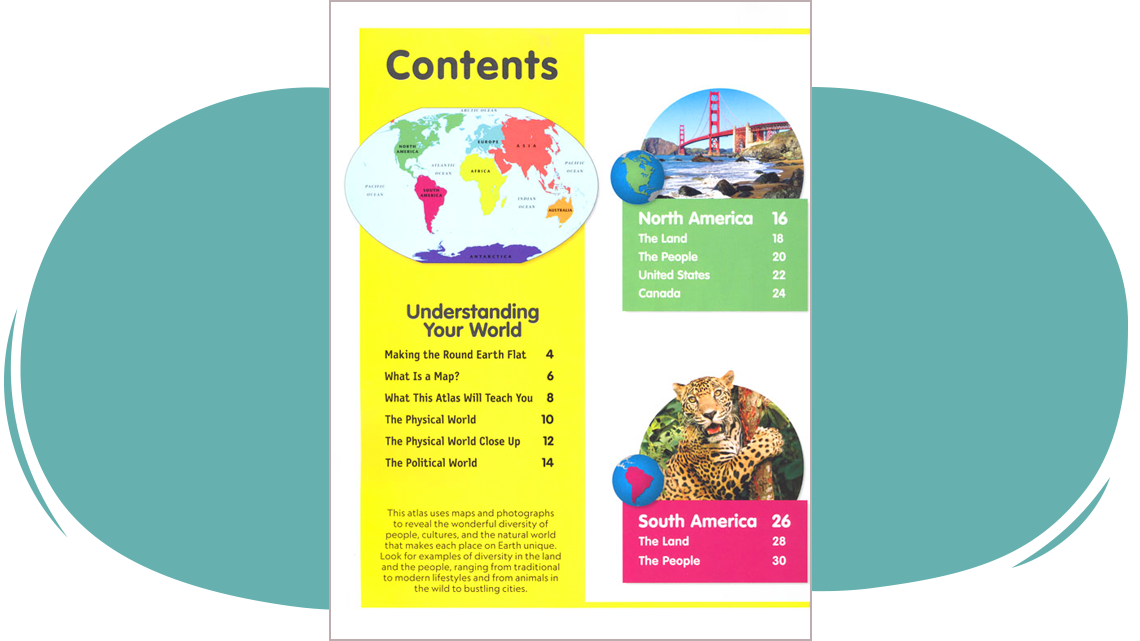
Contents of Understanding Your World. Making the Round Earth Flat page 4. What Is a Map? Page 6. What This Atlas Will Teach You. Page 8. The Physical World. Page 10. The Physical World Close Up. Page 12. he Political World. Page 14. Section: North America. Page 6. The Land. Page 18. The People. Page 20. United States. Page 22. Canada. Page 24. Section: South America. Page 26. The Land. Page 28. The People. Page 30.
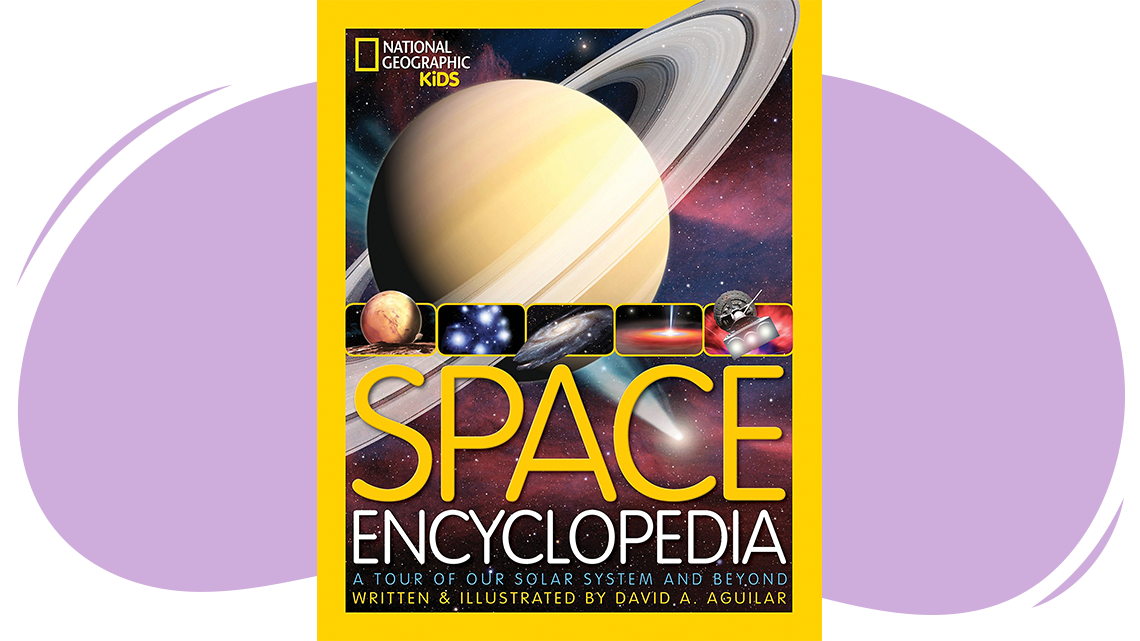
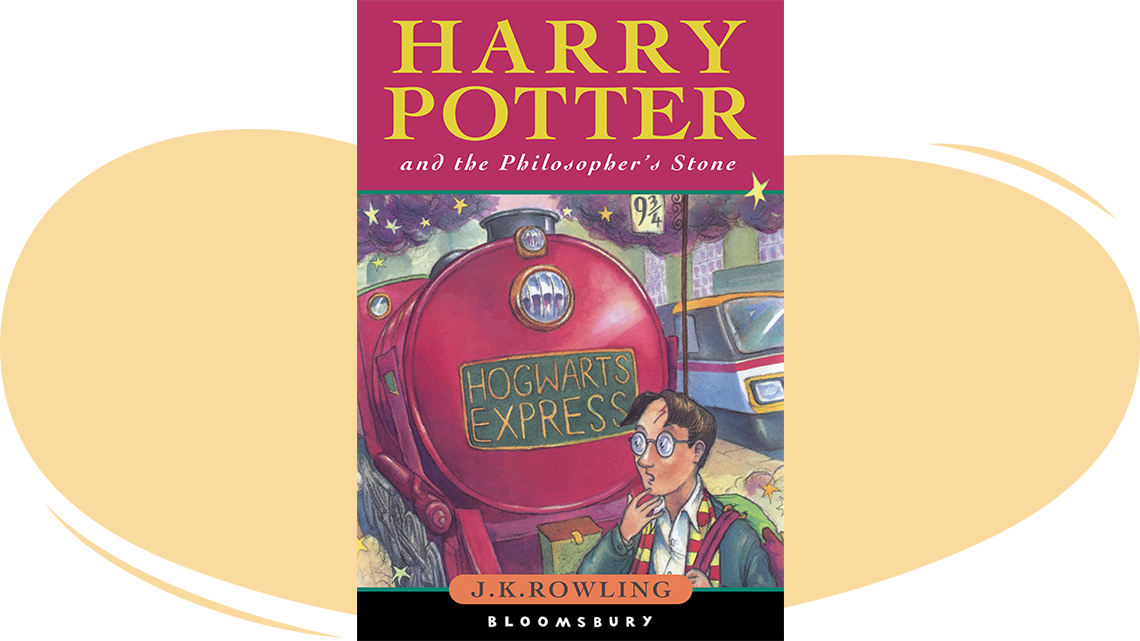
Source: Harry Potter and the Philosopher's Stone: Rowling, J. K., Grandpré, Mary: 9780747532743: Amazon.com: Books

As we gear up for another back-to-school season, a new generation of learners enters the classroom. And as I reflect on today’s student experience, I am struck by the changes that the digital era ushers in – and the promise of what this means to TVO as an educational media organization I see how digital technology captivates young learners. I think of how my young “Millennial” nephews interact with technology – and how they gravitate to my iPad when they visit. I see how digital media grabs their attention, and how it allows them to engage and solve problems in new and exciting ways.
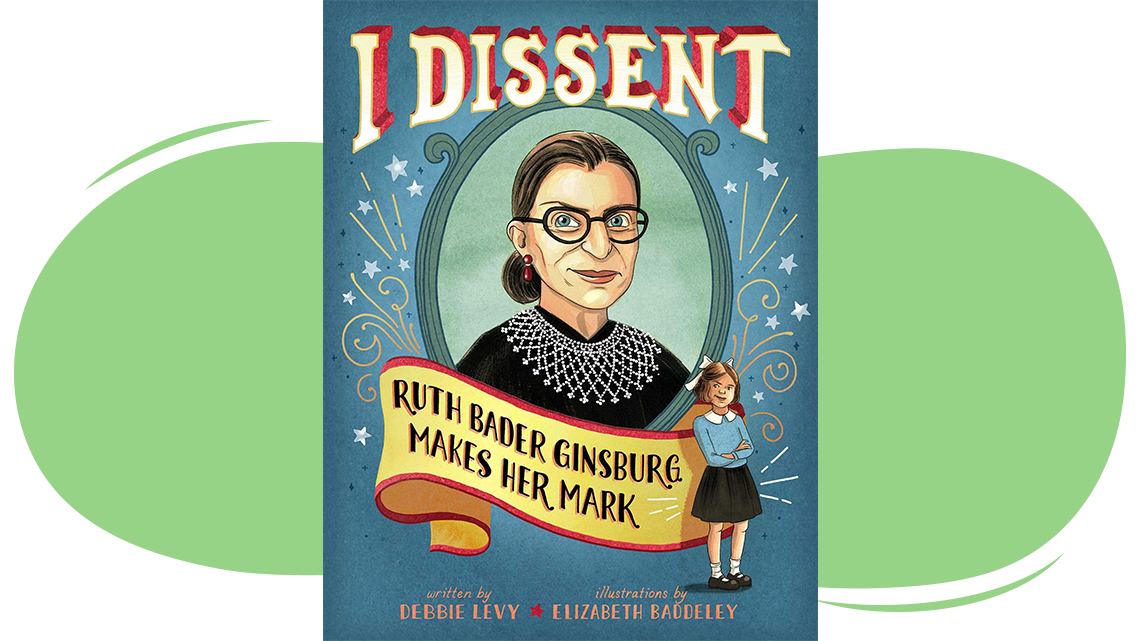
Source: I Dissent: Ruth Bader Ginsburg Makes Her Mark: Levy, Debbie, Baddeley, Elizabeth: 9781481465595: Amazon.com: Books
Complete the Compare and Contrast in your notebook or using the following fillable and printable document.
| Text #1 | Text #2 |
|
Similarities |
|
|
Differences |
|
| Text #3 | Text #4 |
|
Similarities |
|
|
Differences |
|
Press the ‘Activity’ button to access Compare and Contrast.
Action
Exploring text features
Consider
You may have noticed that the sample of texts in the Minds On included both fiction and nonfiction texts. In general, fiction refers to characters, setting, and plot created by the author's imagination. Nonfiction, on the other hand, refers to writing about real people, places, or events.
It’s sometimes hard to tell the difference between fiction and nonfiction. So let’s explore how the two are different. In this learning activity, we'll focus on nonfiction text features.
Nonfiction text features
Take a moment to consider the nonfiction text features you know and/or have previously used to better understand a nonfiction text.
Access the Nonfiction Text Features Chart to examine them.
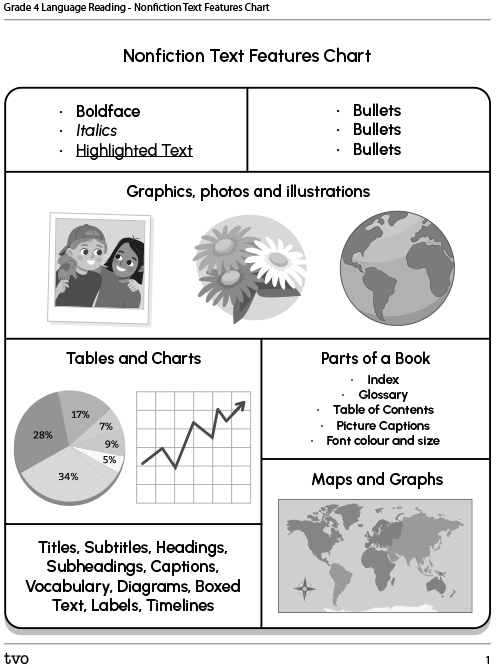
Press the Activity button to access the Nonfiction Text Features Chart.
Activity (Open PDF in a new tab)Student Success
Think-Pair-Share
Let’s examine this nonfiction text from Explore Fossils! by Cynthia Light Brown and Grace Brown. How many text features can you find? Why do you think the author used them?
Quick tip: Use the Nonfiction Text Features chart to help you identify the nonfiction text features.
You can use the Nonfiction Scavenger Hunt template to track your findings in the column labelled, "Yes or No?"
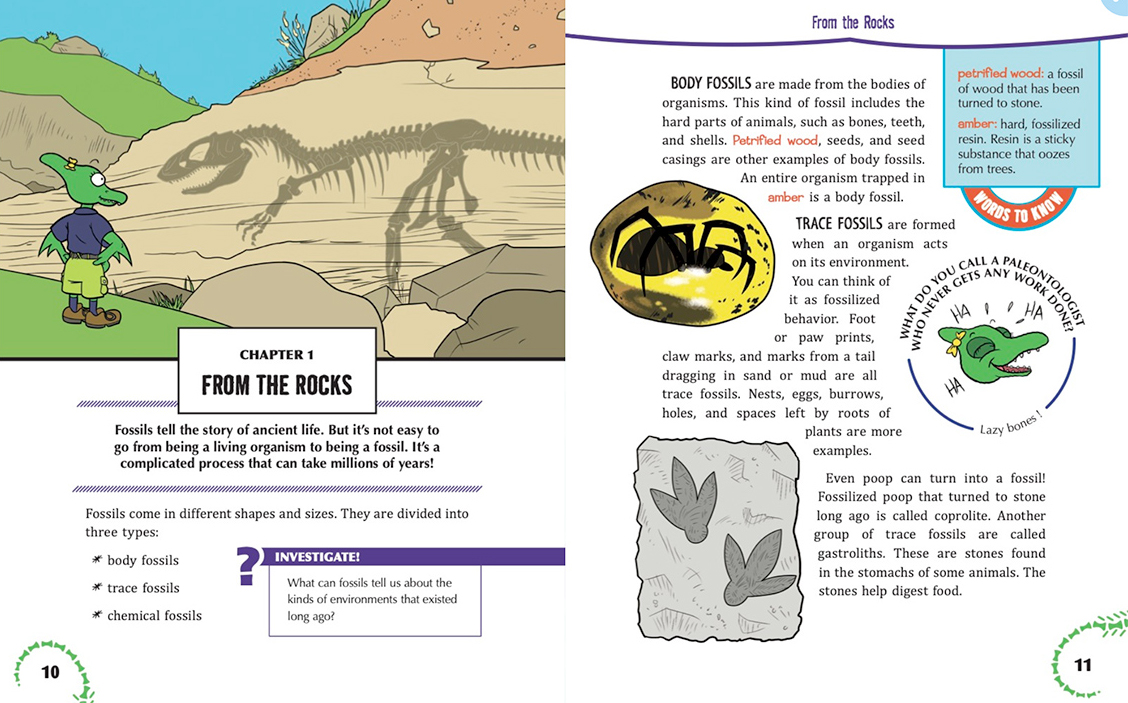
Title: CHAPTER 1 FROM THE ROCKS. Fossils tell the story Of ancient life. But it's not easy to go from being a living organism to being a fossil. It's a complicated process that can take millions of years! Fossils come in different shapes and sizes. They are divided into three types: body fossils, trace fossils, chemical fossils. A callout: INVESTIGATE! What can fossils tell us about the kinds of environments that existed long ago? Section: BODY FOSSILS are made from the bodies of organisms' This kind Of fossil includes the hard parts Of animals, such as bones, teeth, and shells. Petrified wood, seeds. and seed casings are other examples of body fossils. An entire organism trapped in ember is a body fossil. Section: TRACE FOSSILS are formed when an organism acts on its environment. You can think of it as fossilized behavior. Foot or paw prints, claw marks, and marks from a tail dragging in sand or mud are all trace fossils. Nests. eggs; burrows. holes, and spaces left by roots plants are more examples. Even poop can turn into a fossil! Fossilized poop that turned to stone long ago is called coprolite. Another group of trace fossils are called gastroliths. These are stones found in the stomachs of some animals. The stones help digest food. A callout: A. petrified wood: a fossil of wood that has been turned to stone. B. amber: hard, fossilized resin - Resin is a sticky substance that oozes from trees.
If possible, work with a partner and try to discuss as many as you can. Alternatively, research the different text features in order to develop a deeper understanding of each feature.
You can complete the activity using the Nonfiction Text Features Chart in your notebook or using the following fillable and printable document.
| Nonfiction Text Features | Examples from Explore Fossils! |
|---|---|
| Table of Contents | |
| Headings/sub-headings | |
| Photographs | |
| Captions | |
| Diagrams | |
| Chart/Table/Graph | |
| Types of Print (Bold, Italics, CAPITAL LETTERS) | |
| Index | |
| Timeline | |
| Glossary |
Press the ‘Activity’ button to access the Nonfiction Text Features Chart.
Note to teachers: See your teacher guide for collaboration tools, ideas and suggestions.
It’s time to put on your detective hat!
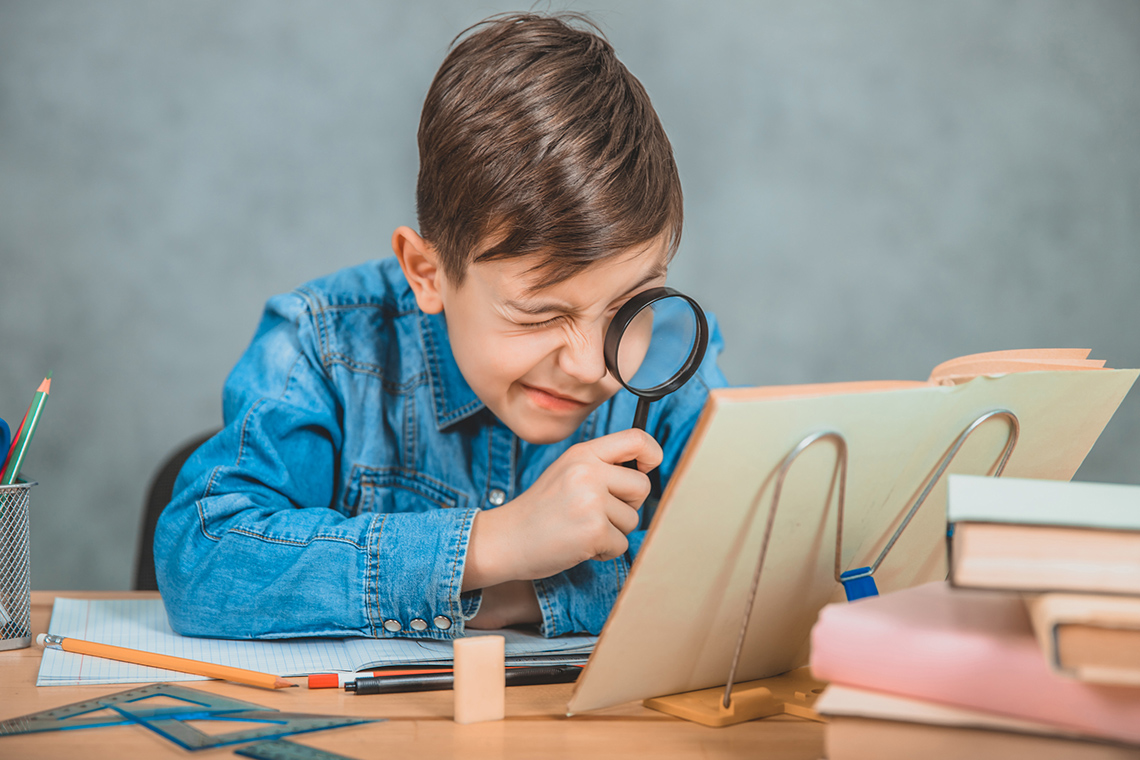
How does each feature help you understand the text?
Each text feature has a specific purpose in nonfiction texts. For example, the heading, "Chapter 1: From the Rocks," tells the reader that this section of text belongs to the first chapter of a book and it contains information about how fossils are formed. This helps the reader to understand the organization of the book as well as the content of the first chapter.
As another example, the words in bold and colour introduce new or important words that the author wants the reader to learn. In this text, the definitions for these words appear in the chapter as well as the glossary.
Complete the Nonfiction Scavenger Hunt in your notebook or using the following fillable and printable document.
| Feature | Yes or no? | How this feature helped me understand the text |
|---|---|---|
| Table of contents | ||
| Headings/sub-headings | ||
| Photographs | ||
| Captions | ||
| Diagrams | ||
| Chart/table/graph | ||
| Italics | ||
| CAPITAL LETTERS | ||
| Bold print | ||
| Timeline | ||
| Index | ||
| Glossary |
Press the ‘Activity’ button to access the Nonfiction Scavenger Hunt.
Now that you have practiced identifying text features, consider how each feature helps you understand the text.
Return to your Nonfiction Scavenger Hunt template to complete the third column labelled, “How this feature helped me understand the text.” You can also record your ideas using another method of your choice.
Consolidation
Independent practice
Explore the Annedroids Experiment or select a nonfiction text of your choice. Identify the nonfiction text features you notice and explain how they help you understand the text.
Complete the Nonfiction Scavenger Hunt in your notebook or using the following fillable and printable document.
| Feature | Yes or no? | How this feature helped me understand the text |
|---|---|---|
| Table of contents | ||
| Headings/sub-headings | ||
| Photographs | ||
| Captions | ||
| Diagrams | ||
| Chart/table/graph | ||
| Italics | ||
| CAPITAL LETTERS | ||
| Bold print | ||
| Timeline | ||
| Index | ||
| Glossary |
Press the ‘Activity’ button to access the Nonfiction Scavenger Hunt.
Questions to consider
Use the following questions to reflect on your learning. You can record your responses using a method of your choice.
- How do text features help you better understand a nonfiction book?
- How do text features help communicate meaning?
- What are three different text features you use the most? Which ones do you use the least? Explain why.
Reflection
As you read through these descriptions, which sentence best describes how you are feeling about your understanding of this learning activity? Press the button that is beside this sentence.
I feel...
Now, record your ideas using a voice recorder, speech-to-text, or writing tool.
